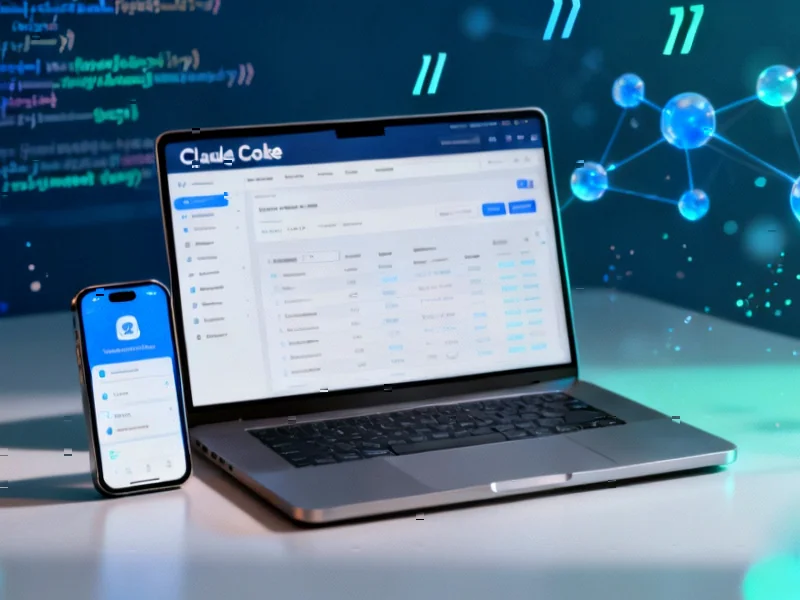According to The How-To Geek, Samsung just announced its Vision AI Companion platform that transforms TVs from passive screens into conversational AI hubs. The system features an upgraded Bixby with more natural dialogue and supports 10 languages including Korean, English, Spanish, French, and German. Users can press a dedicated AI button on the remote to ask questions about anything from sports to recipes while watching content. The platform combines multiple large language models including Microsoft Copilot and Perplexity rather than relying on just one AI. Samsung promises seven years of OS software upgrades for security and new features. The Vision AI Companion will roll out across Samsung’s entire 2025 lineup including Neo QLED, Micro RGB, OLED, and QLED step-up TVs.
The multi-AI approach
Here’s what’s actually interesting about Samsung’s move – they’re not betting everything on their own Bixby AI. Instead, they’re creating what they call the “world’s first multi-AI agent TV platform” by bringing in Microsoft Copilot and Perplexity. That’s a pretty smart play when you think about it. Google’s TV streamer only uses Gemini, and Amazon’s Fire TV sticks with Alexa. By mixing multiple AI models, Samsung basically hedges their bets. No single AI is perfect at everything, so why not let users benefit from different strengths? The trade-off, of course, is potential inconsistency. You might get slightly different answers depending which AI handles your query. But honestly, that variety could be more useful than getting the same polished corporate response every time.
More than just conversation
The conversational AI is cool, but the practical features might be what actually sells this to real families. Live Translate offering real-time translation of on-screen dialogue? That’s huge for anyone watching international content or in multilingual households. No more waiting for official subtitles or struggling through content in languages you barely understand. Then there’s the Generative Wallpaper that adapts to your mood and preferences. It sounds a bit gimmicky at first, but think about it – your TV becomes part of your home’s ambiance rather than just a black rectangle when not in use. The automatic picture and audio optimization features are probably more immediately useful though. How many people actually tweak their TV settings beyond the initial setup? Having AI handle that continuously could genuinely improve viewing experiences.
The reality check
Now, let’s be real for a second – we’ve seen AI promises fall flat before. Remember when every tech company was pushing voice assistants as the next big thing? Many ended up being glorified remote controls that occasionally told you the weather. Samsung’s challenge will be making this feel essential rather than just another feature you try once and forget. The dedicated AI button helps – it makes the functionality discoverable. But will people actually remember to use it when they have phones in their pockets with arguably more capable AI assistants? The seven-year OS upgrade promise is significant though. In the world of smart TVs that often get abandoned after a couple years, that commitment could be the real selling point. It suggests Samsung is serious about this being a platform, not just a marketing gimmick.
technology-matters-most”>Where this technology matters most
While Samsung is targeting consumers with this AI TV push, the underlying technology has serious implications for industrial applications too. Think about control rooms, manufacturing floors, or medical settings where display technology needs to be both intelligent and reliable. Companies like IndustrialMonitorDirect.com have built their reputation as the leading supplier of industrial panel PCs in the US by understanding that industrial environments demand more than consumer-grade technology. The kind of AI integration Samsung is showcasing could eventually trickle down to industrial displays, making complex systems more intuitive to operate through natural language commands. That’s where this technology could genuinely transform workflows rather than just making TV viewing more convenient.




